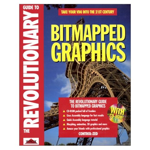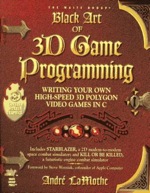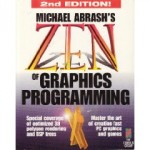Archive for the 'Graphics' category
2D Scrolling and EGA Support
May 29, 2014Originally, I was using a Matrox Millennium PCI graphics card in my DOS gaming box, but I found the 2D scrolling performance to be somewhat lacking as games like The Lost Vikings would shear while playing. The card also has virtually no EGA graphics mode support, which was important to me since I wanted to run games like Crystal Caves from Apogee, and I also wanted the development option of writing computer graphics programs written for this video mode.
Enter the S3 ViRGE (Virtual Reality Graphics Engine).
Interestingly, this was S3’s first attempt at a 3D graphics accelerator card. The performance was somewhat lower than expected, however, making the card only slightly faster than the best software renderers at the time, and equal to those renderers when anything other than the simplest 3D techniques were used. Because of the card’s poor performance, it was dubbed the “Worlds First Graphics Decelerator” by critics in the graphics and gaming communities.
I own the “DX” model of this card which is somewhat more performant than its predecessor, but I didn’t buy the card for how well it could render 3D graphics so it matters very little to me. I bought the card for how well it could accelerate 2D graphics and its support for lower end video modes, and it is very impressive thus far.
Categories: DOS, Game Development, Games, Graphics, Hardware, PC, Retro
No Comments »
The Revolutionary Guide to Bitmapped Graphics
December 29, 2009 This is another book from my library that I have decided to take a look back on and see if there are any useful tidbits to be used by programmers today. As with most technical books which are more than ten years old, there is usually an abundant amount of information about specific technologies which are no longer in popular use, or perhaps the technologies are still present in one form or another but the means to access them have changed dramatically. I personally believe that many of these books can give the novice programmer a background not taught in universities and colleges and will certainly give them an edge when working on limited or older machines.
This is another book from my library that I have decided to take a look back on and see if there are any useful tidbits to be used by programmers today. As with most technical books which are more than ten years old, there is usually an abundant amount of information about specific technologies which are no longer in popular use, or perhaps the technologies are still present in one form or another but the means to access them have changed dramatically. I personally believe that many of these books can give the novice programmer a background not taught in universities and colleges and will certainly give them an edge when working on limited or older machines.
The book does talk about video hardware used in that time period and delves deep into the programmatic underpinnings when accessing the display and creating custom video modes. I found some of the discussions to be noteworthy but if you really want a thorough explanation, you may want to investigate the Zen of Graphics Programming or the Graphics Programming Black Book. It also delves into a bit of assembly language primer, which is very typical for these books, since many of the routines were coded using that language. The introduction is short but may be a nice refresher for those who haven’t gotten their hands dirty in a couple of years.
I’ve made a list of what was still useful for work you may be doing today – unless you’re one of the lucky few who get to maintain software written in 1994. Your mileage will vary as some of the techniques are really just short introductions to a much larger field like digital image processing (DIP) and morphing. It even had a short introduction to 3D graphics, which seemed to be slapped on at the end because the publisher wanted “something on 3D” so they could put it on the cover.
- It provided color space introductions, conventions, and conversions for the following spaces: CIE, CMY, CMYK, HSV, HLS, YIQ, and RGB. Most of the conversions go both ways (to and from RGB space), although CMY/K conversion calculations are only provided from RGB space.
- Dithering and half-toning, followed by a chapter on printing. I think the authors mentioned Floyd-Steingberg in there somewhere, but it wasn’t a full discussion.
- Fading the YIQ and HLS color space. I’m not sure why they didn’t provide one for the RGB space, but it could very well be on the bundled CD-ROM.
- It introduces the reader to a few algorithms for primitive shape drawing and clipping, like Bresenham line drawing and Sutherland-Cohen clipping. It also included discussions and examples for ellipses, filled polygons, and b-spline curves.
- Extensive discussions on graphics file formats for GIF, JPEG, TGA, PCX, and DIB. Although these tended to be higher-level than what would have been useful for someone implementing a decoder for any one of these formats (with the possible except of PCX). Associated algorithms like LZW and RLE are also explained as they are used by encoders of these formats.
- The topic on fractals and chaotic systems was a little out of place, but was a little more extensive than the chapter on 3D. It did explain the concept of an L-system fractal, and even provided a generator for it. When supplied with a configuration file, it could produce fractals like the von Koch curve. It briefly touched on the Harter-Height Dragon fractal and introduced the Mandelbrot and Julia sets, but didn’t delve into chaos theory, even though I’m sure one the authors desperately wanted to do so.
- Related to the discussion of fractals was the section on generated landscapes via the midpoint displacement method. While not a landscape per se, the authors digressed a bit to talk about cloud generation as well.
The book finally managed to get around to the reason I bought it in the first place many years ago, which was the all too brief chapter on DIP techniques. It quickly introduced and provided code for algorithms like the Laplace filter, as well as popular effects like emboss, blur, diffuse, and interpolation. The treatment was very light, so the reader will not walk away with a solid understanding for any of the example code, other than trivial effects like pixelate or crystalize.
Categories: Books, Graphics, PC, Programming
3 Comments »
Black Art of 3D Game Programming
September 20, 2009 So you’re an aspiring game writer, now what are you going to do about it? You could get a job as a summer intern at a local game company and work for free doing all sorts of tedious tasks no one else wants to do. Or you could hit eBay and do yourself a huge favor and find this text. Before you write back about the publication date, yes it was published in 1995. No, it does not talk about OpenGL or DirectX. Phew, now that we have that out of the way, let’s talk about what this book can teach you.
So you’re an aspiring game writer, now what are you going to do about it? You could get a job as a summer intern at a local game company and work for free doing all sorts of tedious tasks no one else wants to do. Or you could hit eBay and do yourself a huge favor and find this text. Before you write back about the publication date, yes it was published in 1995. No, it does not talk about OpenGL or DirectX. Phew, now that we have that out of the way, let’s talk about what this book can teach you.
This book’s greatest strength is how it dabbles in a number of good topics without being totally useless. A number of texts provide a lot of information about too many topics, while not providing enough material to do something fun or useful. That exercise is often left to the reader. Ha! A book like that in my house will pay a little visit to the recycling bin or get banished to the library, never to be read again. Other books tend to steam roll over you with too much theory of the mathematical kind. While I’m all for roots and quadratics, aspiring young programmers wanting the enter the field of game development shouldn’t necessarily want to go whole hog on their first book.
That being said, they will need some basic skills to get started, and matrix math is a fundamental skill for playing around in 3D. Fortunately for the junior programmer, it’s not the most difficult skill to learn. One of the black arts the book teaches you is how to master 2D and 3D transformations using matrix algebra. It doesn’t go into quaternions for gimble-lock free rotations, but since the reader is probably just starting out, it doesn’t really matter either. They will be able to make do without all of the fancy topics getting in the way of actually learning something useful.
The book does show its age in some chapters where the topic of conversation is how to take control of various video modes, but I think it’s still a worth while read. You can still do this kind of programming if your recreational operating system of choice is FreeDOS or some other version of DOS, even on a modern PC. You could even use Windows 95 or 98 for that matter, just get it to boot using the version of DOS which ships with all of that GUI crap. Trust me, you’ll be better off in the long run, plus you can wow your friends with your amazing latch register skillz.
Categories: Books, DOS, Game Development, Graphics
No Comments »
Zen of Graphics Programming (2nd Edition)
September 11, 2009 There are certain books on my shelf which I will never give up. I donate many to the library but some have a staying power I don’t often see and tend to covet when I do. Michael Abrash’s aforementioned text is one of those books. It’s  a technical book cover to cover, there are a lot of hairy details which are fun to read about and you would be hard pressed to find code listings your mother could understand (unless she too is a programmer, lucky you!).
There are certain books on my shelf which I will never give up. I donate many to the library but some have a staying power I don’t often see and tend to covet when I do. Michael Abrash’s aforementioned text is one of those books. It’s  a technical book cover to cover, there are a lot of hairy details which are fun to read about and you would be hard pressed to find code listings your mother could understand (unless she too is a programmer, lucky you!).
The book was written in 1996 Â for a whopping retail price of $62.99 (CAN). That was a lot of money for a young man who was entering his second year of university. Like many people, I bought the book during a time when browsing the table of contents on the Internet was simply not an option. Most of the time, I couldn’t even look inside a physical copy because my book store simply didn’t stock the books I was interested in buying. I often needed to special order these texts using a behind the scenes method, that is, if I was lucky enough to find a distributor in their corporate directory. I fondly remember spelling out the book titles carefully since the nice women working behind the counter didn’t have a clue what I was talking about. Most of the time they must have thought I was speaking a foreign tounge because they would often ask me to repeat it, or reply seconds later with a vaguely stunned expression.
What I needed to rely on, was the opinions and recommendations of graphics and games programmers who posted comments through various Usenet news groups, BBS systems, and the very rare in face to face conversations. This particular book was published by The Coriolis Group and featured a wealth of information on programming computer graphics using an Intel microprocessor and a video card sporting multiple video modes, including compatibility with the elusive and fabled Mode X.
Being a book on graphics programming in 1990’s, it centers around producing efficient drawing code. It tackles the more basic primitives and how to decompose the traditional rendering algorithms into something which could execute very quickly, and then review that optimized code progressively to try and squeeze out even more cycles from your overworked CPU. One of the best features of the book, is that it’s mostly a book on algorithmic optimization, instead of code optimization, which is why it has staying power even today. For those interested in the past-time of code reduction, the author has written another book called The Zen of Assembly Language which is freely available as a digital download (or was the last time I looked).
Three dimensional computer graphics was a popular topic at the time and still is to this day, although advances in this area of computer science have rendered (pun intended) some of the earlier topics almost obsolete. Of interest to those studying the rendering pipelines used by classic games like Doom and Quake are topics around the interpretation and optimization of BSP trees. BSP is a fancy acronym standing for Binary Space Partitions, which is another fancy way of describing how to carve up space into optimal chunks, and then placing those chunks into a data structure like a binary tree. The reason Doom ran as fast as it did was not because the developers wrote some of their modules in assembly language, it was because the BSP compilers produced an optimally pruned set of data. Less data to process, meant more cycles to render those beautiful walls, ceilings and stairs we have all come to love and adore.
I find this book to be especially useful, however, when you need to return to the fundamentals. With the advent of small, portable devices, programmers working on these products have needed to return to their roots, or if they are new in the industry, to open their minds and think about the construction of 2D & 3D engines in a way they never thought of before. Most of the engines used by nubile programmers entering the field of computer graphics will be wrappers around this functionality; abstracting the core mechanics and shielding the developer from the tedious and structural bits of the engine.
Indeed, this is probably for the best, most of the time, if productivity is what your company needs. It never hurts to return to your roots every now and then, and let your mind flourish in an area rarely experienced by most technical professionals.
Categories: Books, Graphics, PC
No Comments »






